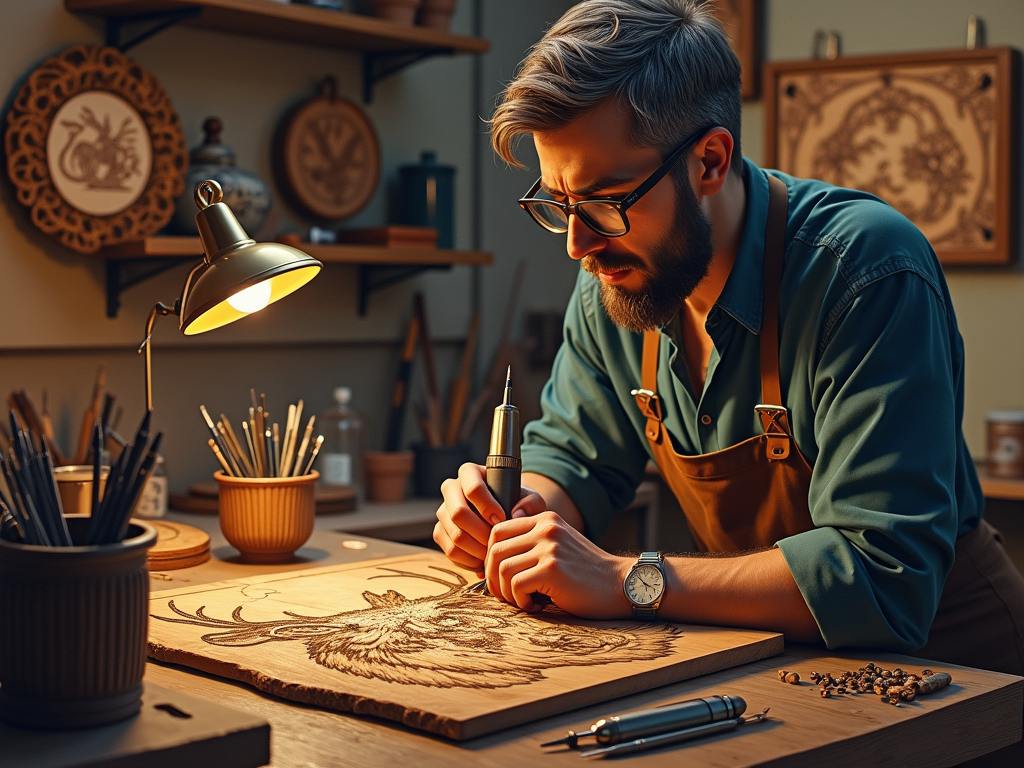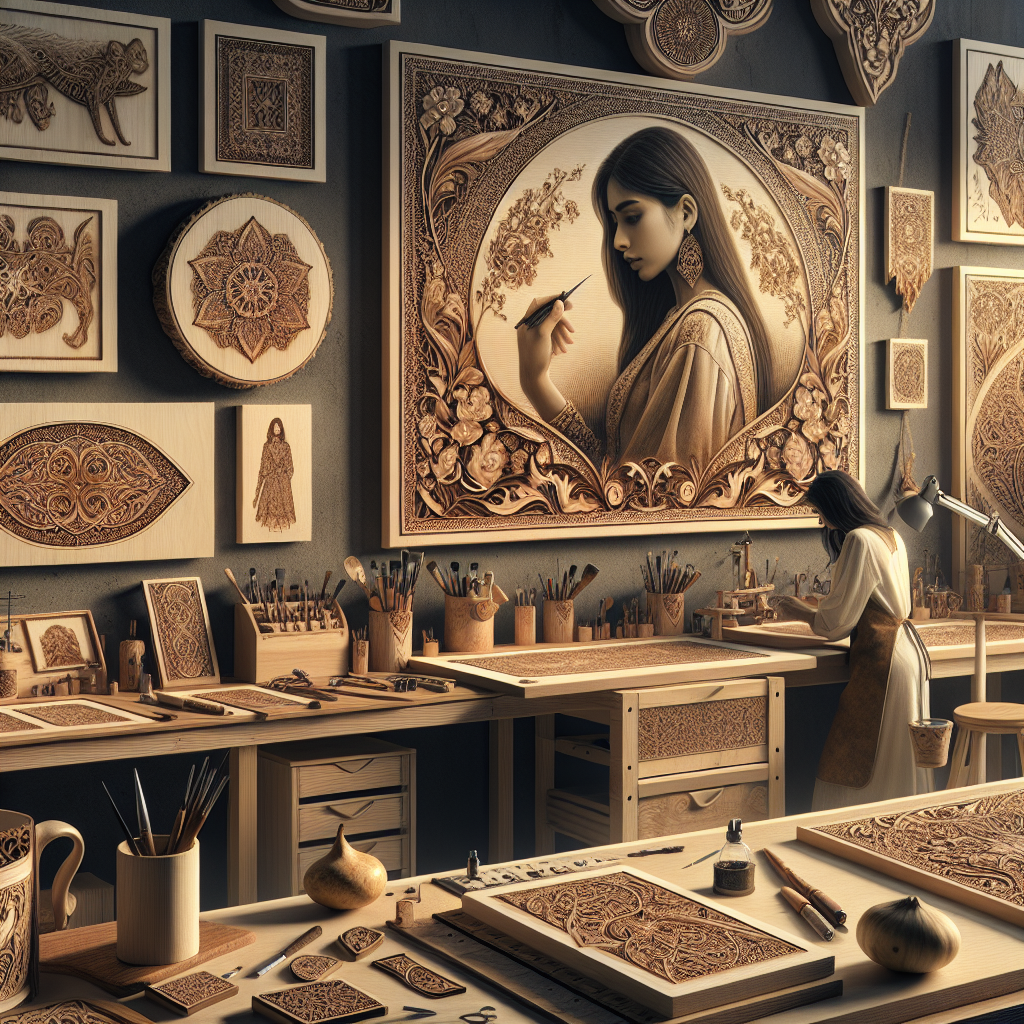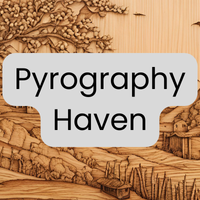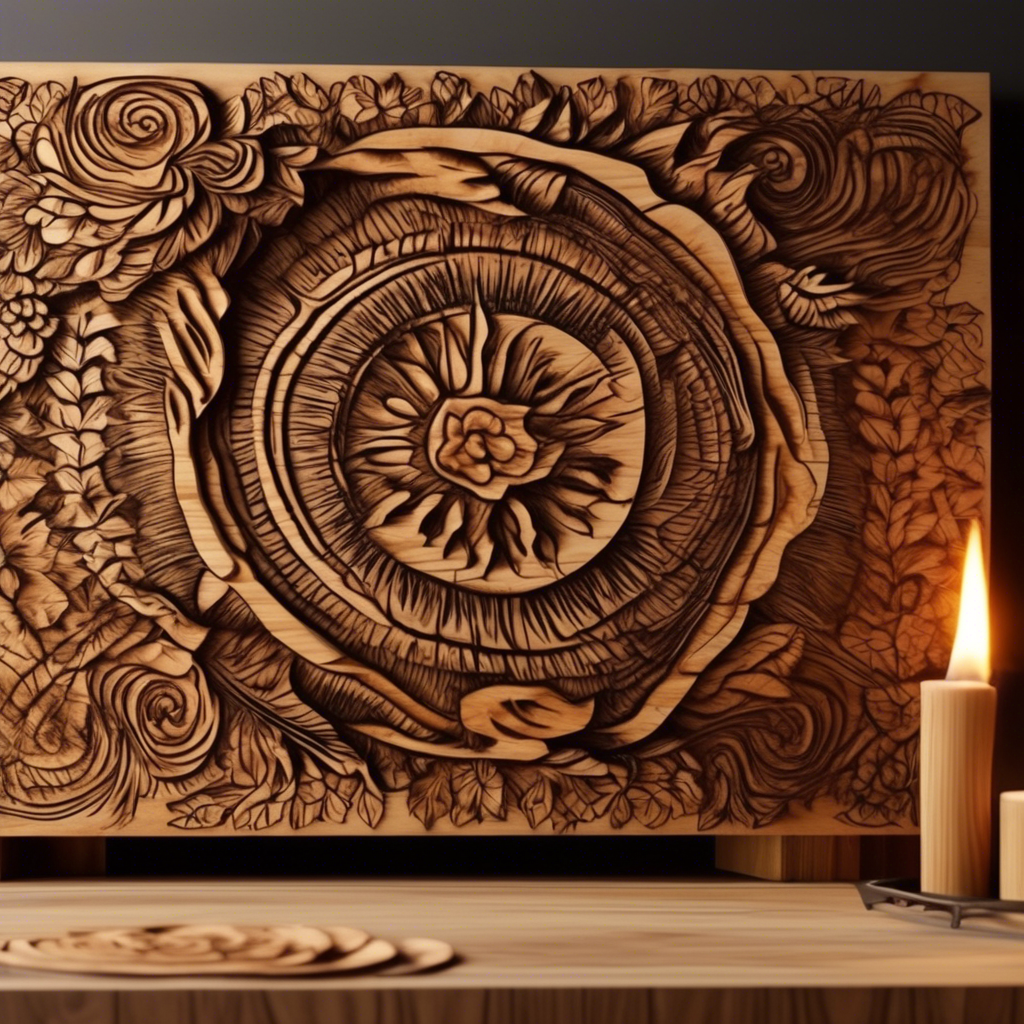I trace wood burning’s remarkable journey from ancient civilizations to modern artistic expression. This craft, also called pyrography, started with simple heated tools for marking wood and has transformed into a sophisticated art form using precise electronic equipment.
Key Takeaways
- Ancient cultures used wood burning for practical purposes like marking belongings, creating decorative patterns, and recording historical events.
- The Victorian era revolutionized the craft with new tools and made it accessible to home artists.
- Modern temperature-controlled tools enable artists to create photorealistic works and intricate designs.
- Contemporary pyrography has expanded beyond wood to include materials like leather, gourds, and bone.
- The craft has evolved into a commercially viable art form with applications in custom signage, home décor, and personalized gifts.
From Ancient Hot Pokers to Modern Art: The Evolution of Wood Burning
Ancient Origins and Cultural Significance
The practice of burning designs into wood dates back to ancient civilizations, with some of the earliest examples discovered in Peru’s Moche culture between 100-800 AD. I’ve found that these early artisans didn’t just create art – they told stories, marked ownership, and connected with their spiritual beliefs through this technique. Ancient civilizations across different regions developed their own unique approaches to wood burning.
The ancient Egyptians and Han Dynasty Chinese (206 BC – 220 AD) made substantial contributions to what we now call pyrography. Their innovative techniques laid the groundwork for modern wood burning practices. These early artists used heated metal implements to create permanent marks on wooden surfaces and gourds, giving birth to the term ‘pokerwork’ – a name that stuck around for centuries.
The practical applications of early pyrography included:
- Marking tools and personal belongings for identification
- Creating decorative patterns on household items
- Recording historical events and stories
- Crafting religious and ceremonial objects
- Making territorial markers and symbols of authority
This ancient art form wasn’t limited to just wood – creative artisans applied their burning techniques to gourds, leather, and other natural materials. Each culture added its own artistic flair, developing specific patterns and motifs that reflected their unique heritage.
Today’s wood burning artists benefit from sophisticated temperature-controlled tools, but they still draw inspiration from these ancient techniques. I’ve noticed how contemporary pyrography styles often incorporate traditional patterns while pushing creative boundaries with modern interpretations.
The transformation from simple hot pokers to precise electronic tools has opened up new possibilities for detail and control. Modern pyrography artists can create photorealistic portraits, intricate landscapes, and detailed wildlife scenes that their ancient counterparts could only dream of achieving.
The artistic process has evolved significantly, yet the basic principle remains unchanged – using heat to create permanent marks on natural materials. This combination of ancient wisdom and modern technology continues to attract new generations of artists to this captivating medium.
The Golden Age of European Pyrography
Medieval and Renaissance Folk Art Traditions
During the Middle Ages, I’ve found that pyrography gained significant traction as a cherished folk art form. Eastern European artisans and German craftspeople made this art form their own, creating stunning pieces that still inspire modern wood burning techniques and designs. Skilled craftsmen decorated everyday items with meaningful symbols and intricate patterns, turning simple wooden objects into treasured family heirlooms.
The decoration of religious artifacts became particularly significant, with artisans burning detailed biblical scenes and sacred symbols into church furnishings. This spiritual connection helped establish pyrography’s cultural importance across Europe, spreading from humble village workshops to prestigious urban guilds.
Victorian Innovation and Democratization
The Victorian era marked a turning point in pyrography’s evolution. The introduction of ‘pokerwork’ machines in the 19th century revolutionized this ancient craft, making it more accessible than ever before. These innovative tools featured platinum points that could maintain consistent heat, allowing for unprecedented detail in decorative wood burning artwork.
This technical advancement led to several key developments in the field:
- Commercial pyrography kits became available for home use
- Women embraced the art form as a respectable hobby
- Pattern books and instructional materials spread widely
- Decorative household items gained popularity as canvas pieces
- The craft shifted from purely functional to artistic expression
The combination of new tools and growing middle-class interest created a boom in pyrography during this period. Furniture makers incorporated burned designs into their pieces, while amateur artists created decorated boxes, panels, and frames for their homes. This democratization of the craft helped establish pyrography’s enduring legacy as both a fine art and an accessible hobby.
Revolutionary Tools Transform an Ancient Craft
The introduction of electric wood-burning tools in the early 1900s marked a pivotal shift in how pyrography has evolved through time. These innovations brought unprecedented control and precision to an art form that had relied on heated metal pokers for thousands of years.
Modern Masters Shape the Craft
The refined capabilities of contemporary tools have enabled artists to push creative boundaries in remarkable ways. Dino Muradian stands out for his breathtaking wildlife portraits, creating pieces with such intricate detail they often get mistaken for photographs. Sue Walters has shared her expertise through comprehensive guides while producing stunning artwork that showcases the full potential of modern pyrography tools. I’ve found that Lora S. Irish‘s influence extends beyond her own artwork—her pattern designs have helped countless artists develop their skills in various wood burning techniques.
Tools of the Trade
Today’s wood-burning equipment falls into two main categories, each offering distinct advantages for different artistic approaches in pyrography. Here’s what you’ll find in a modern pyrographer’s toolkit:
- Solid-point burners (like those from Walnut Hollow and TRUArt) offer reliability and consistent heat distribution, making them perfect for beginners and general pyrography work.
- Wire-nib burners (such as Colwood, Razertip, and Burnmaster models) provide superior temperature control and quick heat adjustments, ideal for detailed work.
Specialized nibs for various techniques include:
- Round shader tips for smooth gradients and filling large areas.
- Writing tips for text and fine lines.
- Detail points for intricate patterns and textures.
- Spear shader tips for creating varied tonal values.
The range of available nibs has transformed what’s possible in modern pyrography artwork. I can achieve effects from bold, dramatic burns to whisper-soft marks that blend seamlessly. Temperature control has become so precise that I can create subtle variations in tone that weren’t possible with traditional methods.
These advancements have opened doors for artists to develop unique styles across different cultural traditions. Through improved tools, pyrography’s cultural impact continues to grow, blending traditional motifs with contemporary expressions. The work of leading pyrography artists demonstrates how modern tools have elevated this ancient craft into a sophisticated art form, capable of producing gallery-worthy pieces that rival any other medium.

Essential Techniques of Modern Wood Burning
Advanced Shading and Detail Methods
I’ve found that mastering varied shading techniques forms the backbone of creating stunning pyrography artwork that captivates viewers. The key lies in combining different approaches to achieve depth and dimension in your work.
Hatching creates light and shadow through parallel lines – the closer together these lines are, the darker the shading appears. Cross-hatching builds on this by adding a second layer of lines at an angle, perfect for creating rich, deep shadows. Stippling offers a different approach, using tiny dots to build up texture and tone – I’ve discovered this works particularly well for creating soft, gradual transitions.
Temperature control plays a crucial role in executing these techniques effectively. Different wood burning styles require specific heat settings to achieve the desired effect. For fine lines and delicate details, I use lower temperatures around 550-650°F, while bold textures need higher heat settings of 700-750°F.
Techniques for Creating Specific Textures
Here are my tested techniques for creating specific textures:
- Wood grain: Use long, flowing strokes with varied pressure to mimic natural grain patterns
- Fur: Create short, overlapping lines with different temperatures to show depth
- Feathers: Combine fine lines with subtle shading to capture individual barbs
- Scale patterns: Apply consistent pressure with curved strokes for realistic texture
Enhancing Pyrography with Color
Color enhancement can transform a standard pyrography piece into an extraordinary artistic creation. I often use watercolor pencils for subtle tinting or acrylic paints for bold accents. Wood dyes penetrate deeply into the material, creating rich undertones that complement burned areas.
Choosing the Right Tools
Tool selection directly impacts the quality of your work. For outlining, I prefer a sharp tip that maintains consistent heat. Shader tips excel at covering larger areas smoothly, while writing tips offer precision for intricate details. The right combination of tools lets you move smoothly between techniques without interrupting your creative flow.

Contemporary Applications Beyond Traditional Wood
Breaking Traditional Boundaries
Modern pyrography has expanded far beyond simple wood burning to embrace diverse styles and materials that push creative limits. I’ve seen stunning realistic portraits and abstract geometric designs emerge as popular contemporary approaches. Today’s artists create photorealistic images with incredible detail, while others focus on bold geometric patterns that catch the eye with their precision and symmetry.
The versatility of pyrography tools has opened up exciting possibilities for mixed media projects. Artists combine burning techniques with acrylic painting, wood carving, and even digital design elements. This fusion creates unique pieces that showcase the depth and texture possible in pyrography artwork.
Expanding Materials and Applications
Alternative materials have become increasingly common in modern pyrography. Here are some popular options that offer unique creative possibilities:
- Leather burning creates durable, personalized accessories like wallets, bags, and book covers
- Gourd art transforms ordinary vegetables into intricate decorative pieces
- Paper burning requires a delicate touch but produces striking results for wall art
- Bone and antler burning creates distinctive jewelry and decorative items
The commercial applications of pyrography have grown significantly. Many artists now specialize in creating custom signage for businesses, while others focus on personalized gifts that add a special touch to important occasions. Modern pyrography techniques are particularly valuable in home décor, where unique pieces can transform living spaces with their warmth and character.
Looking at market trends, I’ve noticed a growing demand for pyrography in commercial spaces. Restaurants, boutiques, and corporate offices increasingly seek custom-burned signs and decorative elements that add authenticity and craftsmanship to their environments. Cultural influences in pyrography have also shaped modern applications, with artists incorporating traditional patterns and motifs into contemporary designs.
The rise of online marketplaces has made it easier for pyrography artists to reach global audiences. Custom commissions have become a significant source of income, with clients requesting everything from personalized cutting boards to elaborate wall installations. Many successful artists now combine traditional burning techniques with digital design tools to plan and execute complex projects more efficiently.
Professional pyrographers often specialize in specific niches, from wedding gifts to corporate branding. Leading artists in the field have shown how specialization can lead to mastery and commercial success. This focused approach has helped elevate pyrography from a hobby to a respected art form with serious commercial potential.

Sources:
Encyclopaedia Britannica – “Pyrography”
Bob Boyer – “The History of Pyrography”
Lora S. Irish – “Pyrography Basics: Techniques and Exercises for Beginners”
Lora S. Irish – “Great Book of Woodburning”
Daniel Wright – “The Art of Woodburning”

